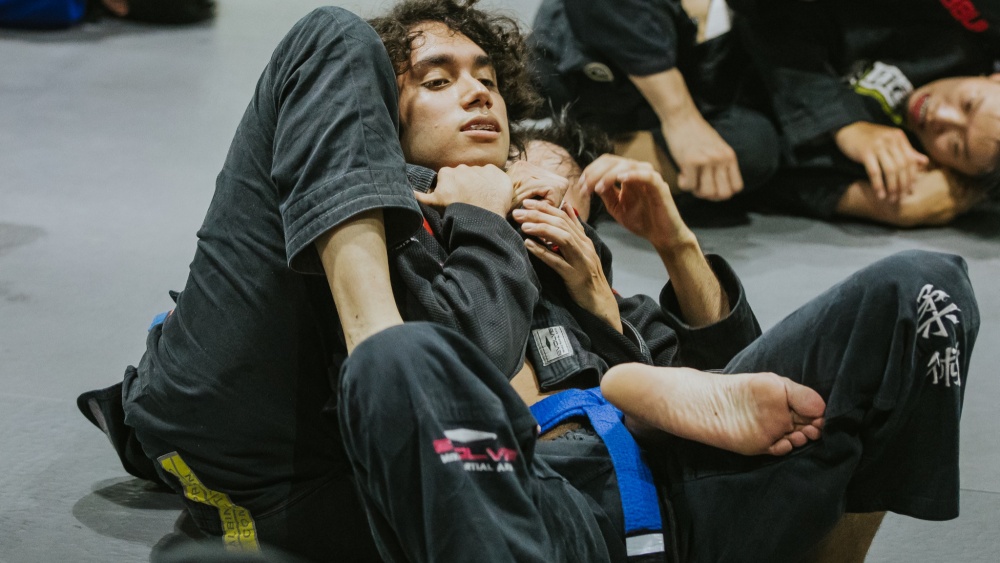It’s that time of the year again as 2025 kicks off. The calendar flips, the clock resets, and everyone you know has suddenly morphed into a goal-setting guru. Everyone swears they’re going to be a different person, but most resolutions don’t even last past January.
This year, you will learn to do it correctly with the SMART framework—Specific, Measurable, Achievable, Relevant, and Time-bound. This article will teach you how to smash your goals this year without dampening your enthusiasm.
How To Set SMART Martial Arts New Year’s Resolutions
Some of the things you should keep in mind as you set new goals for the new year include:
1) Be Specific: Define Your Martial Arts Mission
You should be very specific when setting goals for the new year. Goals like “get better at Brazilian Jiu-Jitsu” or “improve my striking defense” might seem reasonable, but they’re too vague to be helpful.
Instead of setting broad goals, make them more specific, like “I want to master three sweeps from guard bottom.” This way, you can actually track your progress. The more detailed your goal is, the easier it is to work on it.
Other ways to make your martial arts goals more specific include:
- Pinpoint Trouble Spots: Think about positions, techniques, or tactics that have given you trouble lately. Maybe it’s escaping from bottom-side control or difficulty securing a particular submission.
- Identify Performance Goals: You can also set goals based on specific performance milestones. For example, if you can only roll on the mat for three minutes before gassing out, you can set a goal to build your cardiovascular endurance so you can roll for five minutes.
- Change Training Frequency: You can also set specific goals to train more frequently than you currently do. For example, if you only train once a week, you can set a New Year’s resolution to start training at least three times weekly.
2) Make Measurable Goals: Track Your Progress
There’s no way to know if you’re succeeding at your goals if they aren’t measurable. Keeping goals measurable allows you to track your progress so you can celebrate your wins along the way. Think numbers, time frames, or other quantifiable markers.
Examples of measurable goals include:
- Perform 50 armbars while training this month.
- Run two miles in under 15 minutes.
- Attend 20 classes in the next six weeks.
- Sign up for private lessons every two months.
- Attend a martial arts seminar once a year
- Compete in local tournaments twice a year
Use an app or notebook to track your progress, and you’ll quickly discover that there’s something deeply satisfying about seeing those numbers add up. It’s much harder to slack off when you’re tracking your progress.
3) Achievable: Stretch, Don’t Snap
Here’s a reality check: the surest way to ensure you fail to reach your goals is to set unrealistic ones. Your goals should challenge you, but they shouldn’t be so unreachable that there’s no way you can accomplish them, leaving you feeling frustrated.
For example, setting a goal to become a world champion in a year after training for a week isn’t realistic. There’s nothing wrong with having long-term goals, but your primary focus should be incremental improvement.
Three tips that help to keep goals achievable include:
- Assess Your Starting Point: Being honest about your current skill level when setting goals is vital. For example, if you can’t throw a proper roundhouse kick yet, focus on improving your fundamental techniques instead of moving on to spinning kicks.
- Break Goals Down: Big goals are much less overwhelming when you break them into smaller, manageable steps.
- Respect Your Limits: We all have other obligations that can impact our training, so plan for setbacks and adjust your goals as needed.
Your instructors can be invaluable when setting realistic martial arts goals, so share your goals with them to ensure they align with your current capabilities.
4) Relevant: Keep Your Eyes On The Prize

Align your martial arts goals with your motivation, like improving takedown defense for competition or mastering self-defense techniques, to stay focused and committed.
Make sure any martial arts goals you set match your motivations for training. Are you trying to improve your ability to defend yourself, prepare for your first competition, or to stay in shape? Your goals should match your “why.”
Examples of relevant goals include:
- For Competitors: “Improve my takedown defense before my next tournament.”
- For Fitness Enthusiasts: “Build my cardiovascular endurance by adding an extra sparring round weekly.”
- For Self-Defense-Focused Martial Artists: “Master three effective chokes.”
Your goals will feel more meaningful when aligned with your motivation, making you more likely to stick with them.
5) Time-Bound: Put A Deadline On Your Goals
“Someday” isn’t good enough when setting goals. Goals without timelines often fade into oblivion, while setting deadlines creates a sense of urgency that keeps you accountable.
Examples of time-bound goals include:
- “Master how to apply the triangle choke from at least three different positions by the end of the year.”
- “Lose ten kilograms by the end of March to make my weight class for the local tournament.”
- “Complete a 30-day martial arts challenge this month.”
Evaluate your progress towards your goals weekly and adjust your approach as needed. Remember that a missed deadline isn’t failure—it’s an opportunity to recalibrate.
Bonus Tips To Help Stick To Your Martial Arts Resolutions
Here are some tips that will make you more successful at sticking to goals:
- Find An Accountability Buddy: Share your goals with some of your training partners so they can celebrate your wins and call you out if you start slacking.
- Reward Yourself: Treat yourself to something you want, like a new rash guard, whenever you accomplish one of your goals.
- Keep Things Fun: You’re doing something wrong if working on your goals feels like a chore. Find ways to enjoy the journey, such as relishing your camaraderie with your training partners.
Take Your Martial Arts Growth To The Next Level With SMART Goals
2025 can be your best year yet as a martial artist if you set SMART goals. Be specific, measure your progress, aim for achievable milestones, stay relevant to your mission, and set deadlines.
Check out complimentary martial arts classes at Evolve MMA if you’re looking for a place to train in Singapore. From Muay Thai to BJJ, we have everything you need to hit those New Year’s resolutions.
Book your complimentary trial class with our World Champions below!
If you have any other questions regarding Evolve MMA and the programs we offer, you can get in touch with our membership executives at the following locations:
Evolve MMA (Far East Square)
26 China Street
Far East Square #01-01
Singapore 049568
Phone: Evolve MMA (Orchard Central)
181 Orchard Road
#06-01 Orchard Central
Singapore 238896
Phone: Evolve MMA (KINEX)
11 Tanjong Katong Road
#02-52 KINEX
Singapore 437157
Phone: Evolve MMA (Star Vista)
1 Vista Exchange Green
#02-26A The Star Vista
Singapore 138617
Phone: (65) 6539 9590
The Bushido code is a code of conduct that’s closely linked to the Samurai culture. It played an important role in the development of many Japanese traditions like the art of sword making and tea…
Going over some inspirational Bruce Lee quotes can help to develop the right mentality for martial arts and change your life. Bruce Lee is widely regarded as the most influential martial artist to ever live…
Life can get difficult at times to the point you start to run out of hope. Having a fighter’s mentality can help you to get past any obstacles life throws at you and it makes…
Conor McGregor is arguably the most popular mixed martial arts fighter in the world. His influence has transcended the sport in many ways and also inspired a generation of young and hungry fighters. With his…
Strength is a virtue that keeps on giving, and this month’s #WarriorsOfEvolve has that in spades. 33-year-old teacher Ms Hemma Balakrishnan finds her strength and motivation by being there for her family, friends and students….
Martial arts have given us many inspirational role models over the years as their popularity worldwide increased. Martial arts have always been more than fighting systems: it’s a way of life that teaches you how…
Singapore has long been celebrated as a global leader in urban sustainability, earning its reputation as a “Garden City.” Long before green architecture became a global trend, Singapore had already set its sights on integrating…
Fighting on the back foot is an aspect of Muay Thai synonymous with counter-fighting. That means, it is most effective when you are pitted against an aggressive fighter, and you can use their forward pressure…
Chain wrestling is a critical concept in both Brazilian Jiu-Jitsu and wrestling. It refers to the ability to seamlessly transition from one technique to another, keeping your opponent off balance and continually forcing them to…
Brazilian Jiu-Jitsu (BJJ) has been one of the most popular martial arts in the past two decades, thanks to its proven effectiveness as a fighting system. The ground-fighting system was developed to allow smaller, skilled…
Yes. Hammer fists are a signature technique primarily used in mixed martial arts (MMA). It’s mainly used as a ground-and-pound technique, but using them from standing positions is legal. Hammer fists are mostly used in…
The overhook is a fundamental grip in Brazilian Jiu-Jitsu that can be utilized for control, defense, and offensive techniques across various positions. Understanding how to strategically utilize the overhook will enhance your grappling skills by…



































